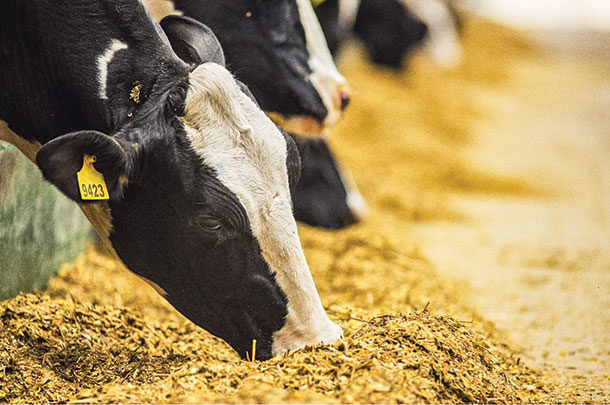Nutritional management is vital to overall herd health and productivity. As we are learning more and more about how the connection between nutrition and efficiency begins at birth, we know it’s critical to deliver the necessary nutrients to each cow, at the correct stage of life, to maintain optimal output.
Nutrition plays a key role in strengthening cell wall junctions to prevent leaky gut
The gastrointestinal tract is among the largest immune organs in the body and is a critical player in an animal’s immune response. Therefore, optimal gut health is essential to animal performance. The intestinal wall of a cow is only a single layer of cells bound together by what are known as “tight junctions.” These tight junctions are made of protein and are responsible for regulating what comes in or through the cells and into the animal’s bloodstream.
Volatile fatty acids (VFAs) that are produced in the rumen, including butyrate, are important energy sources for those intestinal epithelial cells. So it is also important that the rumen is a stable environment where rumen microbes can continue producing appropriate VFAs to ensure total gut health and function, and to prevent pathogens from invading the body.
However, when animals are stressed, those tight junctions in the intestinal epithelium start to separate and lose their integrity. This is known as “leaky gut syndrome.” Warmer temperatures are here, and a fair amount of research has been done on the effects of heat stress and leaky gut. However, heat stress isn’t the only stressor that will cause leaky gut. Any stress, such as calving, feed changes, heat, transportation and disease, can all contribute to the breakdown of those protein tight junctions in the epithelium of the intestines. A balanced diet and a diverse and resilient gut microbiome help to mitigate that stress and improve overall gut function.
An optimal rumen environment can help prevent SARA and lameness
Another stressor that can cause leaky gut is subacute ruminal acidosis (SARA). SARA is a prevalent problem in dairy herds and happens when rumen pH drops below 5.6 repeatedly or for prolonged periods of time. A rumen pH that stays below 5.6 for too long causes death of rumen microbes and a release of lipopolysaccharide (LPS) into the rumen. This stress is also another cause of leaky gut.
So as the tight junctions lose their integrity and there is an increase of LPS in the system, there is an increase in the amount of LPS crossing through the intestinal epithelium and into the bloodstream, affecting the health of cattle right down to what we commonly see as laminitis. Because of this, the goal is to maintain a proper rumen pH level.
It’s hard to assess the rumen pH of a dairy cow just by looking at her. Yet weakened rumen digestion can be quietly lowering herd production and health. One way to combat these challenges is to work with your nutritionist to incorporate an immune-support feed additive. With the right immune-support product, cows have a better chance of overcoming challenges, improving immune function, optimizing rumen and liver health, and maintaining consistent feed intake.
A more robust and resilient rumen environment leads to more available nutrients, a better balance of VFAs, and a more stable rumen pH. This generates better animal performance and less incidence of SARA.
The importance of growth and body condition
Body condition score is an important measure of a dairy feeding system’s effectiveness. An adequate body score promotes milk production, reproductive efficiency and herd longevity. A growing first-calf heifer has different energy and glucose needs than a third-lactation cow. Ensuring that those animals coming into the milking string have proper maturity, growth and condition directly relates to their health and productivity once there.
Excessively fat cows, overly thin cows or cows that lose condition too rapidly (more than 0.5 points of condition on a 5-point scale) during that transition period run much greater risks of metabolic and reproductive problems.
Heifers that are immature will never produce the same amount of milk as their counterpart who has reached appropriate maturity at calving. It’s well known that calfhood diseases can have life-long consequences. Being able to bolster that calf’s immune system, optimize rumen development and strengthen the gut microbiome to optimize her growth and condition will all contribute to the success of each animal and ultimately the success of the operation.









